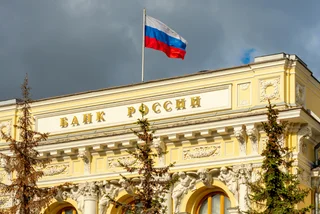Last year, people in the Czech Republic consumed a record amount of ice cream. The figure is expected to drop this year in part due to a lack of tourists and also due to more moderate weather.
People in the Czech Republic normally consume an average of about four liters of ice cream per person per year, according to the Federation of the Food and Drink Industries of the Czech Republic (PKČR). Last year people in the Czech Republic consumed 5.4 kilograms of ice cream per capita, equal to 6.4 liters of ice cream, based on figures from German statistical firm Statistica.
PARTNER ARTICLE
“Ice cream was successful in the Czech Republic last year thanks to continued economic prosperity and wage growth. In the period before the coronavirus strike, Czechs were increasingly looking for premium ice cream products. The price of industrially produced fruit ice cream jumped to its historical record last year when for the first time it fluctuated more systematically month after month above the level of 200 CZK per liter,” Lukáš Kovanda, chief economist at Czech Fund, said in a column in Parlamentní listy.
Prices have stagnated on the low end, but risen significantly for premium ice cream. “While the average retail price of ‘polar cake’ (polárkový dort) has remained virtually unchanged over the past eight years, and is in the narrow range of around 35 CZK, the average retail price of ice cream has risen by about 15% since 2012. This also indicates that Czechs are looking for premium ice cream and are willing to pay extra for it,” he added.
Going along with record consumption is increased production. Some 50.90 million liters of ice cream were produced in the Czech Republic in 2018, according to figures from EU statistical arm Eurostat. This includes ice cream sold for export. Germany led in production, with 494 million liters, followed by France at 451 million and Italy at 435 million.
The production figure is a record for the Czech Republic since it became independent in 1993. The previous record was in 2004, when production reached almost 46 million liters. In 2017, more than 44 million liters of ice cream were produced.
The production of ice cream was partly boosted by extremely warm weather, which causes increased demand.
Long stretches of extremely warm weather are not expected in 2020, and domestic ice cream makers are facing a drop in demand due to the lack of foreign visitors, caused by coronavirus.
Premium ice cream vendors are confirming the drop in sales.
Due to the rainy summer and coronavirus, Angelato recorded a decrease in sales compared to previous years. “We haven’t yet examined what percentage it is, but is seems to be 10, 15 or 20%,” Angelato head Bojan Dimitrijević told daily Pražský deník.
Production per capita in Europe is led by Belgium, with 18.3 liters of ice cream per person in 2018, followed by Estonia and Lithuania with 15.4 and 15.1 liters respectively.
The Czech Republic is 16th in the EU, with 4.8 liters per capita. This is below the EU average of 6.2 liters of ice cream per capita.
The Czech Republic is doing significantly better than Slovakia, where in 2018 they produced only 0.03 liters of ice cream per head. Within the countries of the Visegrad Group, however, the Czech Republic lags behind both Hungary, at 6.7 liters, and Poland, at 6.3 liters. Slovakia, though, was very low at 0.03 liters produced per person.
Ice cream produced per person (in liters, 2018)
1. Belgium 18.3
2. Estonia 15.4
3. Lithuania 15.1
4. Sweden 9.7
5. Croatia 8.6
6. Finland 7.2
7. Italy 7.2
8. France 6.7
9. The Netherlands 6.7
10. Hungary 6.7
EU average 6.2
16. Czech Republic 4.8
Source: Eurostat, Lukáš Kovanda












 Reading time: 3 minutes
Reading time: 3 minutes 



























